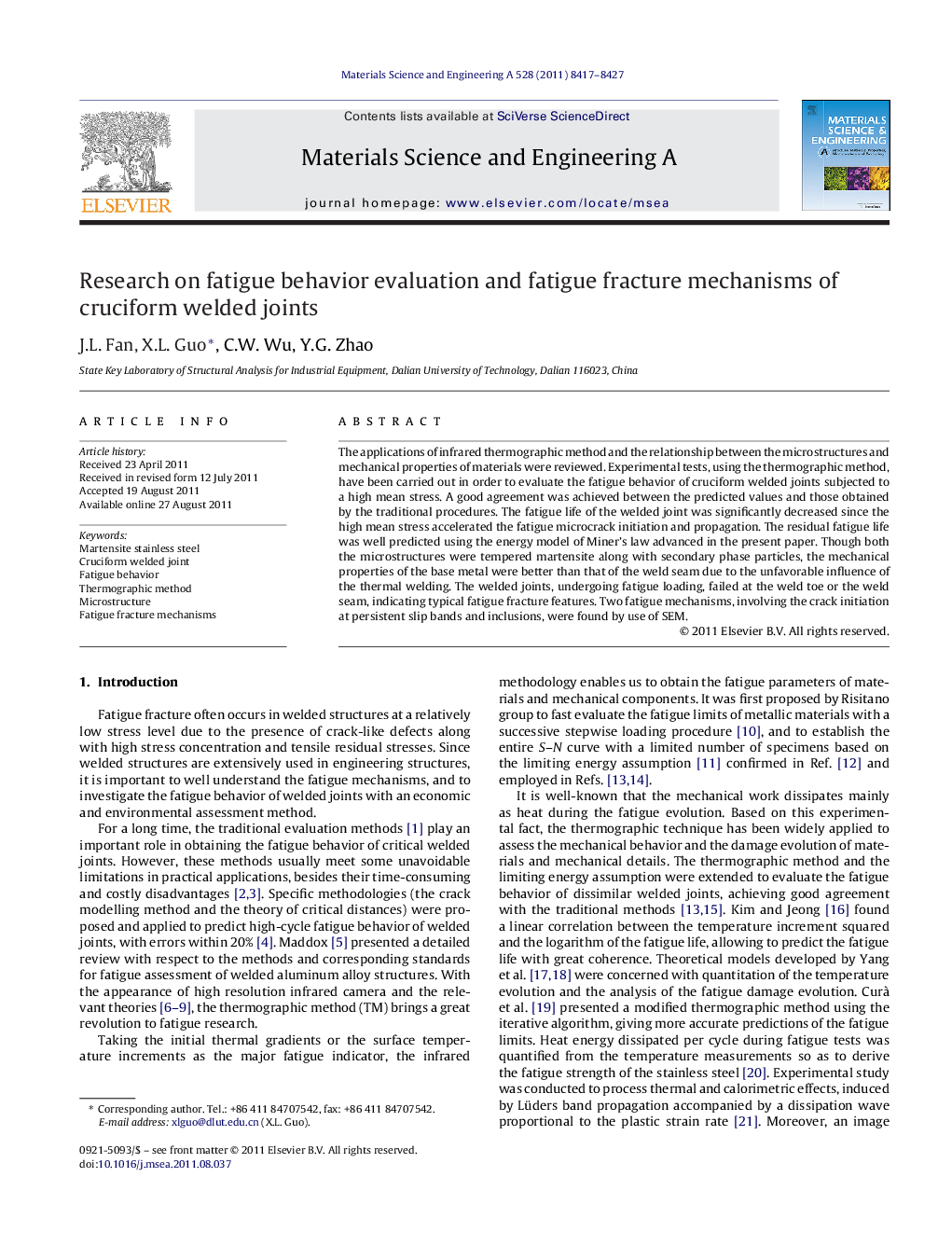| کد مقاله | کد نشریه | سال انتشار | مقاله انگلیسی | نسخه تمام متن |
|---|---|---|---|---|
| 1578066 | 1514815 | 2011 | 11 صفحه PDF | دانلود رایگان |

The applications of infrared thermographic method and the relationship between the microstructures and mechanical properties of materials were reviewed. Experimental tests, using the thermographic method, have been carried out in order to evaluate the fatigue behavior of cruciform welded joints subjected to a high mean stress. A good agreement was achieved between the predicted values and those obtained by the traditional procedures. The fatigue life of the welded joint was significantly decreased since the high mean stress accelerated the fatigue microcrack initiation and propagation. The residual fatigue life was well predicted using the energy model of Miner's law advanced in the present paper. Though both the microstructures were tempered martensite along with secondary phase particles, the mechanical properties of the base metal were better than that of the weld seam due to the unfavorable influence of the thermal welding. The welded joints, undergoing fatigue loading, failed at the weld toe or the weld seam, indicating typical fatigue fracture features. Two fatigue mechanisms, involving the crack initiation at persistent slip bands and inclusions, were found by use of SEM.
► Unique fatigue tests were carried out to evaluate the fatigue behavior of welded joints by the thermographic method.
► The fatigue parameters and the residual life were predicted based on the infrared methodology, achieving good predictions.
► Effects of mean stress level on fatigue behavior were discussed.
► Tempered martensite and secondary phase particles greatly improved the material properties.
► Two fatigue mechanisms involving crack initiation at the persistent slipband and non-metallic inclusions were found.
Journal: Materials Science and Engineering: A - Volume 528, Issues 29–30, 15 November 2011, Pages 8417–8427